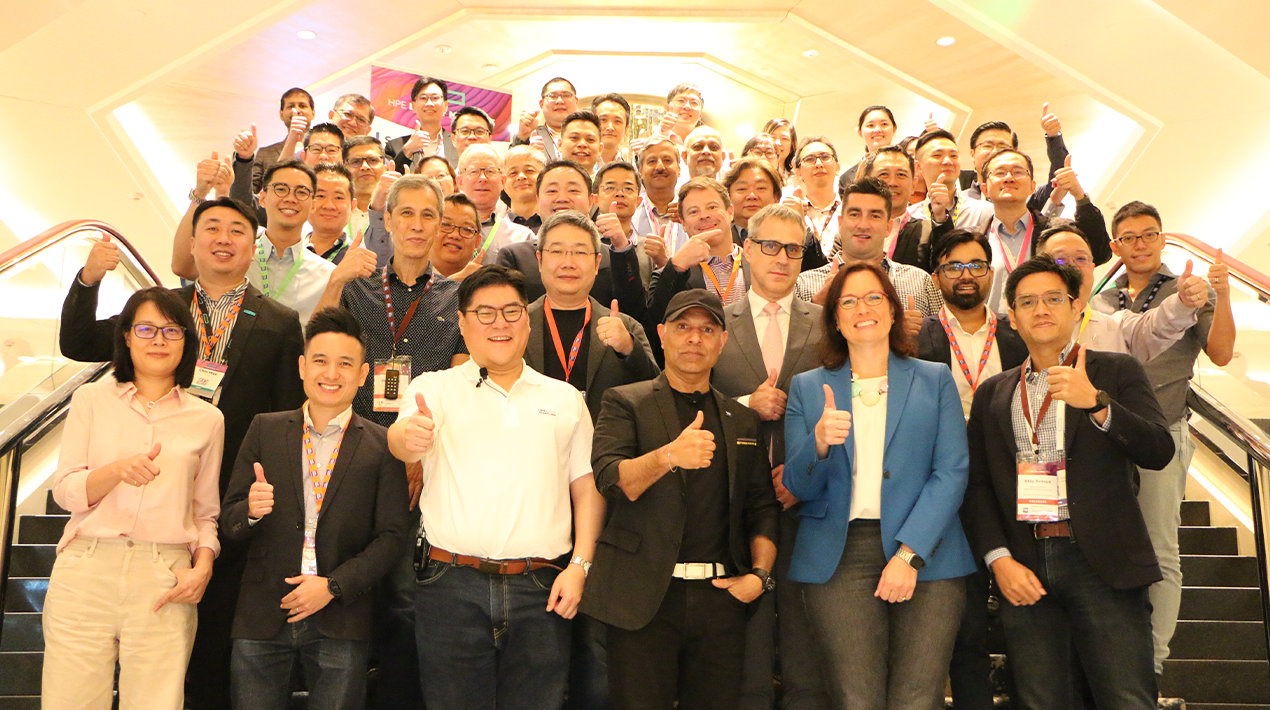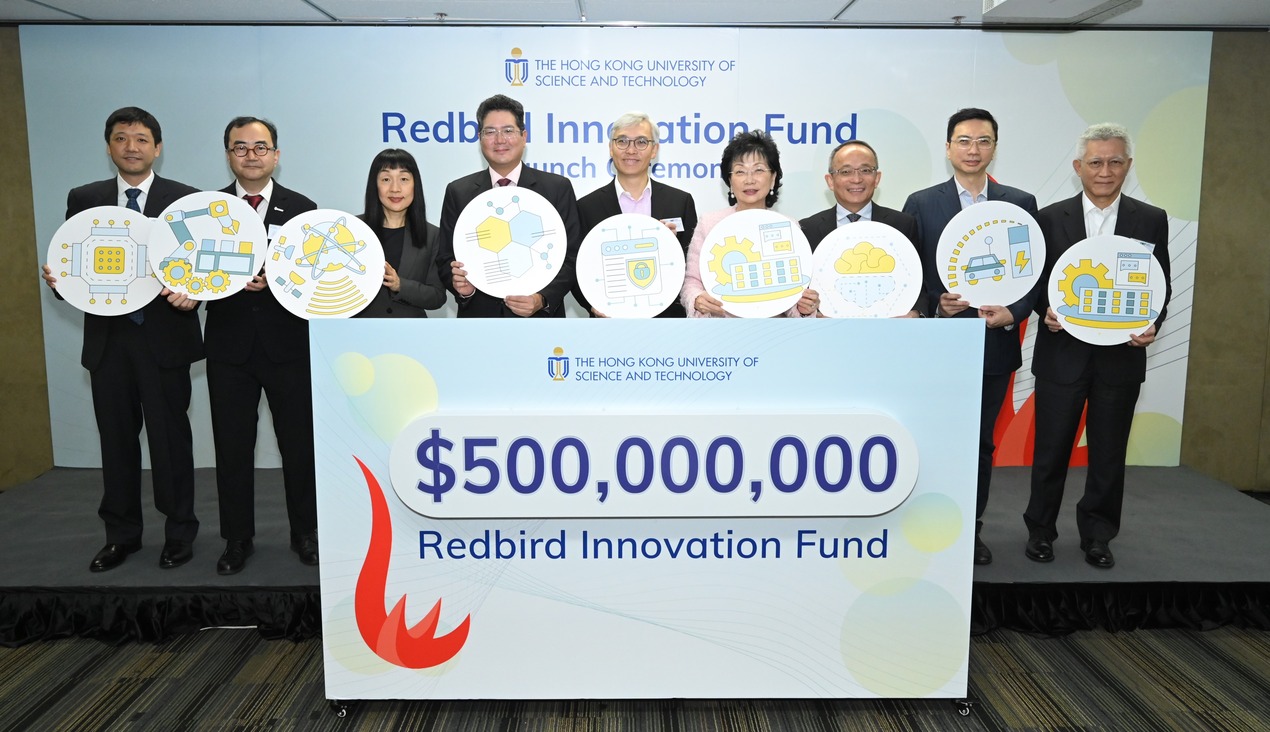
|
Getting your Trinity Audio player ready...
|
Businesses across the globe are increasingly recognising the advantages of embracing a strategy that prioritises edge computing, cloud-based operations and data-centric management and harnesses the power of artificial intelligence (AI) during this era of digital transformation and sustainability.
This shift in focus is not just an evolution within the business realm; instead, it holds remarkable potential to revolutionise entire industries and foster unprecedented levels of efficiency and innovation. No doubt, as businesses step into this new era, they will be presented with fresh opportunities as well as new challenges.
This transformation influences the operational aspects of companies but also has the potential to reshape the very foundations of their respective industries. Organisations must prepare themselves for a multitude of shifts.
These include changes related to data gathering, management and utilisation, along with the substantial influence of AI technology on their product and service development, customer engagement strategies, and overall business operations.
Organisations in Singapore are leading the way in embracing a sustainable digital future, setting a benchmark for others to follow. These initiatives not only bolster the country’s economic growth but also position it as a significant contender for long-term economic stability in the digital era.
Recent reports highlight an intriguing trend within the business sector. A remarkable 86% of corporate executives recognise that sustainability represents an investment that not only safeguards their companies from potential future disruptions but also fulfils a vital social responsibility.
Furthermore, it reveals that sustainability extends beyond environmental preservation, encompassing the optimisation of specific business functions, including cost control. Indeed, 80% of corporate leaders have reported cost optimisation as a direct result of their sustainability initiatives. This underscores the synergy between operational efficiency and immediate economic sustainability, showcasing how sustainability can yield tangible benefits.
In the pursuit of digital transformation and sustainability, numerous challenges must be confronted. One such hurdle involves the belief that the optimal strategy involves migrating all workloads to the cloud. While cloud computing offers substantial benefits, it may not fully account for the complexities of the contemporary information technology landscape.
The IT ecosystem comprises not only the tried-and-true but still valuable older generations of technologies but also newer innovations. Moreover, many businesses today rely on an array of diverse cloud services, resulting in what is commonly referred to as a “multi-cloud” environment. Additionally, sustainable IT strategies must take into account the rapidly expanding realm of edge computing.
To surmount these challenges, enterprises need to formulate an IT strategy that acknowledges the intricacies of the broader IT landscape beyond simply transitioning workloads to the cloud. They must strategise on how to effectively manage a diverse array of cloud services, seamlessly integrate both legacy and modern technology, and incorporate the growing significance of edge computing into their plans.
The OpenGov Events convened Singapore’s foremost technology leaders on 21 September 2023, at the Raffles City Convention Center Singapore to discuss the most recent insights regarding the key elements reshaping strategies for digital transformation. The session focussed on sustainability advancements, prioritising data-centric approaches, and adapting to the evolving landscape of hybrid design.
Opening Remarks

According to Mohit Sagar, CEO and Editor-in-Chief of OpenGov Asia, in an era marked by dynamic digital transformation and a heightened focus on sustainability, businesses across the globe are recognising the immense potential of adopting an edge-centric, data-driven approach. At the forefront of this transformative convergence stands Singapore, setting the benchmark for sustainable digitalisation while positioning itself as a global leader in this paradigm shift.
“The marriage of sustainability and data-driven strategies is poised to reshape businesses and economies alike,” says Mohit.
Singapore’s pioneering role in sustainable digitalisation offers a blueprint for nations worldwide seeking to balance technological advancement with ecological preservation. By successfully aligning economic growth with environmental responsibility, the nation showcases the way forward in harmonising these two seemingly disparate goals.
Mohit recalls Singapore Prime Minister Lee Hsien Loong’s remarks at the recent G20 New Delhi Summit. Prime Minister Lee underlined the importance of expanded private finance to confront the “existential” threat of climate change, which will necessitate trillions of dollars in annual investments to achieve global net-zero emissions by 2050.
Singapore’s blended finance platform, according to the Prime Minister, aims to pool resources from the public, private, and philanthropic sectors to fund green initiatives and assist high-carbon enterprises in their attempts to reduce emissions.
For businesses, this paradigm shift represents a profound opportunity. The adoption of edge-centric approaches and the strategic integration of data-driven technologies empower companies to operate more efficiently and respond swiftly to evolving market demands. This synergy between sustainability and top performance underscores the importance of making environmental responsibility a fundamental element of digital transformation strategies.
As organisations align their technology with sustainability objectives, they unlock the potential of cloud computing, edge computing, and AI to optimise processes and drive efficiency. To fully harness this potential, effective data management, governance, security, and analytics form the bedrock for unlocking valuable insights that fuel revenue growth and expansion.
“The integration of sustainability and digital transformation necessitates strategic planning, precise data management, and unwavering commitment to innovation,” Mohit says. “By incorporating these elements, businesses position themselves for success in a future characterised by growth fueled by sustainability and technological advancement.”
This convergence of sustainability and digital transformation promises enhanced business performance, granting organisations a competitive edge in a rapidly evolving landscape. Furthermore, sustainability extends beyond ethical or efficiency considerations, serving as a wise investment in long-term resilience that strengthens businesses against disruptions and uncertainties.
Sustainable IT encompasses more than cloud migration, requiring an inclusive approach accommodating multi-generation systems, various cloud platforms, and the emerging realm of edge computing. This comprehensive approach paves the way for organisations to thrive in an increasingly interconnected and sustainable future.
Elevating customer experiences through a data-first approach is about understanding individual preferences, harnessing data analytics, and embracing innovation agility. Prioritising customer-centricity and strategic data utilisation enables businesses to forge deep connections with their audience, laying the foundation for sustainable growth.
Mohit recognises that data-driven insights fuel innovation, allowing organisations to introduce products and services aligned with customer preferences. Hence, adopting a “hybrid by design” approach involves seamlessly integrating efficient technologies, circular economy principles, and environmental factors into business strategies.
“This approach not only enhances competitiveness but also contributes to an eco-friendlier digital landscape,” Mohit observes.
Leveraging large-scale AI powered by renewable energy represents a significant stride toward sustainable IT practices, combining efficiency and environmental responsibility. By optimising workloads, minimising waste, and embracing circular economy principles, organisations can contribute to a more environmentally conscious technological landscape.
Mohit believes that to navigate the challenges in delivering sustainable and customer-centric experiences, businesses should integrate data security, sustainability, innovation, and adaptability into their approach. Ethical data practices, AI-driven insights, and flexibility are key elements in this endeavour.
Balancing data utilisation with stringent security measures is essential to maintain customer trust and avoid breaches. Harmonising innovation with sustainability objectives requires strategic decision-making.
“Ensuring data accuracy and reliability across various platforms is a consistent effort, and extracting meaningful insights from abundant data is crucial for informed decision-making,” Mohit concludes.
Welcome Address

The pandemic has altered the nature of work considerably, requiring companies to find innovative strategies for ensuring continuity, boosting productivity and adaptability when handling emergency scenarios. One such adaptation has been the introduction of a hybrid work model, allowing employees to work from home for a portion of their workweek. Besides affording employees greater flexibility, this work model enables organisations to optimise their resource allocation.
Joseph Yang, Managing Director, Singapore at Hewlett Packard Enterprise, agrees that a hybrid work style can lead to cost savings in maintaining physical offices and related infrastructure. With employees able to work from anywhere with a strong internet connection, it also expands access to talent beyond the confines of a traditional office location.
Moreover, the adoption of a hybrid work model goes beyond its immediate benefits and significantly contributes to an organisation’s agility in navigating the dynamic and ever-changing business environment. This flexibility empowers companies to make swifter and more adept adjustments in response to shifting circumstances and emerging challenges.
Conversely, when organisations adopt a hybrid strategy, data bias often arises inadvertently, as Joseph shares. It is important that organisations acknowledge this issue and take a more proactive stance in addressing it. One approach involves harnessing artificial intelligence (AI) on a broader scale to transform data bias into a valuable source of intelligence.
AI proves particularly effective in identifying, managing, and rectifying bias, surpassing human capabilities in terms of accuracy and efficiency. As a result, AI is increasingly leveraged to mitigate data bias. It can swiftly and comprehensively analyse vast datasets, while also identifying potential bias-indicating patterns and providing relevant solutions.
Furthermore, AI possesses the capability to continuously evolve and enhance its bias-mitigation abilities through learning from newly acquired data. Consequently, the utilisation of AI can aid organisations not only in pinpointing existing biases within their data but also in proactively preventing the emergence of new biases in the future.
This strategic approach allows businesses to accelerate the adoption of a data-driven methodology that precedes and generates actionable insights. Consequently, organisational performance experiences a notable boost, and challenges related to information technology sustainability become more intricate, reflecting the rapid evolution of technology’s role in shaping businesses.
Joseph thinks that one of the pivotal domains for addressing this issue revolves around enhancing data centre efficiency. By implementing cooling solutions, transitioning to renewable energy sources, and designing data centres with energy-efficient layouts, organisations can significantly diminish their carbon footprint.
Furthermore, the adoption of lifecycle management techniques, data compression, and deduplication can curtail the demand for data storage and subsequently reduce energy consumption. Additional measures to mitigate the carbon footprint include decreasing travel through server virtualisation, promoting remote work arrangements and opting for environmentally conscious data storage solutions.
A commitment to sustainability, along with ongoing monitoring and transparent reporting, forms the cornerstone of an environmentally responsible data management strategy. This mindset can contribute to a more sustainable and environmentally friendly approach to information technology.
According to Joseph, the term “sustainable information technology” encompasses the adoption of information technology practices and tools that align with long-term sustainability objectives and demonstrate environmental consciousness. These strategies will significantly aid a more sustainable and eco-friendly approach to data management and technology infrastructure.
Joseph underscored the importance of thoughtfully selecting data centre locations that enable the implementation of efficient cooling systems and the utilisation of renewable energy sources. Just intentionally and strategically selecting locations can make substantial strides in reducing their carbon footprint and minimising their ecological impact.
Sustainable information technology not only benefits the environment, but also offers cost efficiencies, resource optimisation, and better operational results. This enables organisations to reduce energy consumption, reduce operational costs, improve resource allocation, and ensure business continuity through reduced downtime.
“Embracing sustainable information technology in line with increasingly stringent environmental regulations and customer expectations makes the organisation a responsible and forward-thinking entity in the modern business landscape,” Joseph concludes.
Power Talk
Architecting an intrinsically sustainable, data-first, and hybrid-by-design future represents a forward-looking approach that integrates three critical elements: sustainability, data-centricity, and hybrid infrastructure. This approach is poised to shape the future of businesses and technologies in an increasingly interconnected and eco-conscious world.

Ashutosh Sharan, Vice President of Customer Solutions for Southeast Asia at Mastercard, highlights Mastercard’s proactive involvement in various endeavours that fuse sustainability with digital transformation.
One noteworthy initiative is the introduction of the Priceless Planet Coalition, where Mastercard collaborates with organisations such as Conservation International to embark on an ambitious mission of restoring 100 million trees over five years. This undertaking ingeniously utilises technology to actively engage consumers in meaningful environmental conservation efforts.
Additionally, Mastercard remains steadfast in its commitment to advancing digital financial inclusion, particularly in underserved regions. Through the deployment of digital payment solutions, Mastercard aims to empower individuals economically, concurrently diminishing the dependence on cash transactions.
“Mastercard dedicates substantial data resources to propel sustainability initiatives.,” Ashutosh explains. “We analyse payment data and consumer behaviour to encourage environmentally conscious choices.”
The company also places a strong emphasis on supply chain sustainability, harnessing digital solutions to empower businesses in monitoring and enhancing the environmental footprint of their operations.
Furthermore, their initiatives to offer digital identity solutions for marginalised populations are aimed at bolstering financial access and sustainability within the digital economy.
Mastercard has established an ambitious objective of attaining carbon neutrality in its worldwide operations by the year 2050. To achieve this, they are actively integrating sustainable practices and cutting-edge technology to significantly diminish their carbon footprint.
Moreover, they are engaged in projects focused on smart cities and urban sustainability. These initiatives entail partnerships with cities to deploy digital solutions that enhance transportation systems and promote urban sustainability. In addition, Mastercard is dedicated to supporting digital education initiatives that advocate for sustainable practices among individuals and businesses alike.
Ashutosh acknowledges that aligning sustainability goals with customer expectations can be challenging due to factors such as insufficient awareness, conflicting priorities, and the perceived high costs associated with sustainable products. To overcome these obstacles, companies should implement clear and easily understandable communication strategies that highlight the mutual benefits of sustainability, while also providing incentives for making sustainable choices.
He further suggests that addressing the issue of limited product availability requires close collaboration with suppliers and partners, expanding accessibility through various means, and considering online sales options. Ensuring transparency within supply chains, adapting to evolving customer preferences, and demonstrating tangible and measurable sustainability impacts are all critical steps in meeting these challenges.
Building trust by avoiding greenwashing, tailoring sustainability efforts to local preferences, and proactively engaging and educating customers through events and collaborations are key strategies to align sustainability goals effectively with customer expectations. Ultimately, companies that prioritise transparency, education, and customer collaboration are better equipped to foster a shared commitment to sustainability with their customer base.
“Ensuring a consistent and seamless customer journey across various channels in a hybrid model necessitates a well-planned strategy,” Ashutosh explains. “It begins with centralising customer data through a CRM system, which serves as a foundation for personalisation.”
The significance of adopting an omnichannel approach, which entails maintaining consistent messaging, branding, and service standards across both physical and digital touchpoints, cannot be understated.
It is crucial for the integration of technologies to be seamless, enabling the smooth flow of data between these channels to facilitate effortless transitions for customers. This uniformity in branding, design, and messaging serves to reinforce brand recognition and build trust.
In Ashutosh’s view, personalisation driven by customer data is paramount, ensuring that customers feel genuinely understood and well-served, regardless of the channel they opt for. Providing a consistent customer support experience, whether through phone, email, chat, or in-person interactions, remains of utmost importance.
Ashutosh emphasises that mobile optimisation is absolutely crucial in today’s business landscape. Mobile experiences must align with and match the quality of desktop interactions. Moreover, he stresses the importance of continuous feedback collection and iterative improvement to ensure that customer experiences are constantly evolving and improving.
In addition, Ashutosh highlights the vital importance of robust cybersecurity measures and strict data privacy protocols. These are essential not only for protecting sensitive customer information but also for maintaining and reinforcing customer trust in the long term.

Dr. Tung Whye Loon, the Director of Data, AI & Research at SP Digital, a part of SP Group, spoke on how SP Digital has achieved successful integration of AI and data optimisation into various facets of its operations, reaping numerous advantages.
One noteworthy application is predictive maintenance, driven by AI, which allows SP Digital to anticipate equipment failures and proactively perform maintenance, thereby reducing unplanned downtime and bolstering asset reliability. Additionally, the utilisation of AI in demand forecasting optimises production and distribution, ensuring efficient operations and minimising issues like stockouts or surpluses.
“AI-driven fraud detection enhances customer protection and financial security, while customer segmentation enables more effective marketing campaigns through personalised targeting,” Dr Tung explains.
SP Digital is actively exploring additional applications of AI and data optimisation to continue advancing its operations. This encompasses streamlining energy consumption through the use of AI for scheduling production during off-peak hours and the implementation of demand-response programmes to manage energy demand more efficiently.
Furthermore, there is significant potential for enhancing customer service through AI. Chatbots and machine learning can play a pivotal role in addressing customer inquiries promptly and efficiently, while also identifying potential churn risks.
Additionally, AI-driven data analysis can be instrumental in fostering innovation. It can identify customer patterns and generate fresh ideas through natural language processing, thereby facilitating the development of innovative products and services.
These initiatives showcase SP Digital’s commitment to leveraging AI and data optimisation to transform its operations and enhance customer value, according to Dr Tung.
Harnessing the potential of large-scale AI for a data-first strategy requires a systematic approach aimed at transforming organisations into data-driven powerhouses. This journey commences with the meticulous collection and integration of data from diverse sources, with a focus on ensuring data quality and standardisation.
The application of AI-powered analytics, including machine learning and predictive models, then plays a pivotal role in unveiling hidden patterns and correlations within vast datasets, offering valuable insights crucial for informed decision-making.
Moreover, the establishment of scalable infrastructure, such as cloud computing and edge computing, becomes vital to accommodate the ever-expanding volumes of data and facilitate real-time analysis. Strong data governance practices, robust cybersecurity measures, and unwavering compliance with data privacy regulations are indispensable elements for safeguarding data integrity and security throughout this process.
Dr Tung stresses that actionable insights are derived through visualisation, reporting, and automated alerts, empowering stakeholders to make data-driven decisions.
“Continuous learning, feedback loops, and a data-first culture foster ongoing improvement, with cross-functional collaboration and measurable impact driving the adoption of AI-powered data strategies,” he believes. “Ethical considerations guide responsible AI and data practices, ensuring the ethical use of data and AI technologies throughout the organisation.”
In a resource-intensive, hybrid IT environment, achieving a harmonious blend of innovation and sustainability is paramount. This can be accomplished by embracing a multi-faceted approach that addresses both technological advancement and ecological responsibility. Organisations should prioritise energy efficiency and renewable resources to power their IT infrastructure, complemented by data centre optimisation techniques that reduce resource wastage.
Dr Tung believes that embracing cloud computing and hybrid models allows for dynamic resource allocation, minimising energy consumption, “Circular economy principles encourage the recycling and reusing of IT equipment, further reducing environmental impact.”
Additionally, encouraging innovation for sustainability promotes the development of green IT solutions and the integration of emerging technologies to optimise resource utilisation. Effective data optimisation and management strategies minimise data redundancy, leading to lower storage and processing requirements.
Dr Tung firmly believes that involving employees in sustainable practices and regularly monitoring key performance indicators related to sustainability serves as the foundation for nurturing a culture of accountability within the organisation.
By adhering to environmental regulations and actively collaborating with eco-conscious suppliers, the organisation ensures that sustainability remains a central focus in its IT operations. This commitment to sustainability underscores the organisation’s dedication to responsible environmental stewardship.
By implementing these strategies, organisations can effectively balance the demands of innovation with sustainability in resource-intensive, hybrid IT environments, reducing their environmental footprint and contributing to a greener, more responsible future.

Joseph Yang, the Managing Director of Hewlett Packard Enterprise (HPE) in Singapore, revealed that HPE encounters various sustainability challenges in its pursuit of sustainability goals. Among these challenges, one major concern is the substantial energy consumption associated with its data centres and manufacturing facilities.
Addressing these energy-related issues is a crucial aspect of the company’s sustainability mission. HPE has successfully implemented strategies to diminish energy consumption without compromising operational efficiency, thereby mitigating its environmental impact.
Additionally, being a technology company, HPE faces the challenge of managing electronic waste (e-waste) stemming from outdated equipment. To address this issue responsibly, HPE emphasises the need for proper disposal and recycling methods to minimise environmental harm associated with e-waste disposal.
HPE confronts significant challenges in its sustainability initiatives, including the need to ensure the sustainability of its extensive supply chain. This encompasses responsible material sourcing and ethical labour practices, both of which require diligent management and oversight.
Moreover, HPE faces the intricate task of balancing data privacy and security concerns with its sustainability objectives. This balancing act underscores the complexity of HPE’s sustainability efforts, as it strives to uphold its commitment to sustainability while safeguarding sensitive data and ensuring robust cybersecurity measures are in place.
Joseph notes that HPE acknowledges several sustainability opportunities within its operations. One significant avenue involves embracing energy-efficient technologies and adopting sustainable practices within its data centres and facilities. This approach presents an opportunity to reduce energy consumption without compromising performance, aligning with HPE’s commitment to sustainability.
Joseph is confident that HPE can further capitalise on circular economy principles by refurbishing and repurposing old IT equipment, promoting recycling, and extending product lifecycles. Collaborating with suppliers and partners enables HPE to drive sustainability throughout its supply chain, from responsible material sourcing to reduced emissions in logistics and transportation.
Leveraging its technological expertise, HPE can innovate sustainable IT solutions, such as energy-efficient servers and environmentally friendly data storage, he says. Harnessing data analytics and AI allows HPE to optimise operations for sustainability, including predictive maintenance to reduce energy consumption and data-driven supply chain improvements.
HPE’s engagement with customers through green IT solutions and services, along with a dedication to regulatory compliance, enhances the company’s reputation as a responsible and sustainable organisation.
“By addressing sustainability challenges and capitalising on opportunities, HPE is well-positioned to align its business objectives with environmental and social responsibility” Joseph concludes. “Ultimately, we are contributing to a more sustainable and environmentally conscious future for all.”
Closing Remarks

Alexis Crowell, Vice President and CTO, Sales, Marketing and Communications Group – Asia Pacific and Japan, Intel reiterated the significance of implementing and seamlessly integrating data within the organisation to enhance customer satisfaction. By maintaining a robust data history, services can be tailored to better align with the individual needs of customers, ensuring greater personalisation and relevance.
Well-integrated data allows organisations to respond quickly to customer issues or complaints, which can improve company image and build customer trust. Additionally, this data-driven approach empowers organisations to identify trends and patterns in customer behaviour, which can then be leveraged to formulate more potent and effective marketing strategies.
Alexis believes that effective data management not only enhances customer satisfaction but also enables organisations to streamline their internal processes, leading to cost reductions and improved overall efficiency. Consequently, prioritising data integrity and quality represents a valuable investment in the pursuit of long-term success for any organisation.
Alexis added that it is possible to align data-based organisations with information technology sustainability. This strategic focus not only promotes eco-friendly practices but also fosters long-term resilience and responsible stewardship of resources in the digital age.
“Organisations do not need to worry about not being able to achieve harmony between efficient and sustainable use of information technology,” she argues. “With the right commitment and smart investments, every organisation can take steps towards sustainable, environmentally friendly data management.”
Mohit emphasised the crucial role of engaging the entire organisation in this ongoing journey, asserting that it’s not solely the responsibility of the IT department. The far-reaching effects and advantages of sustainable information technology reverberate throughout the entire organisation.
He believes that ample resources and support are readily accessible to organisations aspiring to embark on the path of information technology sustainability. These resources encompass a spectrum of tools, expert guidance, best practices and collaborative networks, all designed to facilitate a smooth and successful transition toward sustainable technology practices.
“By tapping into these available resources, organisations can navigate the complexities of sustainability initiatives with confidence and vigour, fostering a brighter future for both their operations and the planet,” Mohit is convinced.
In closing, Mohit extended his gratitude to all the delegates for their presence and active participation. He firmly believes that their invaluable insights and contributions not only enriched the discussions but also solidified a collective commitment to forging a sustainable and progressive future.
















